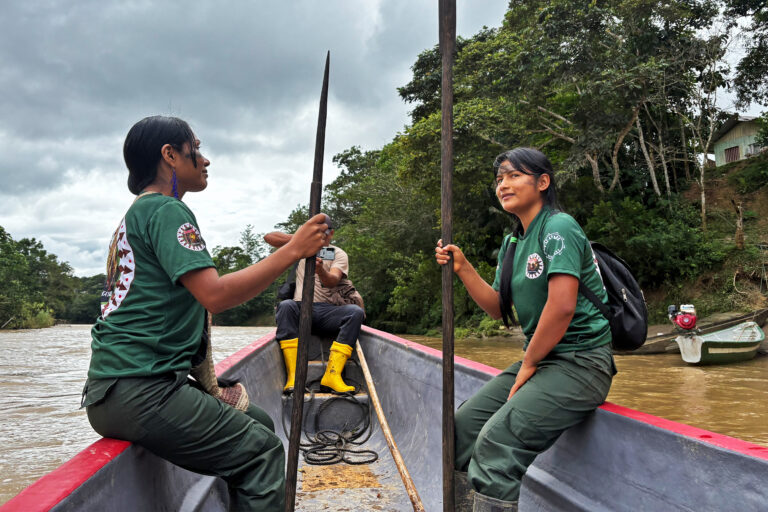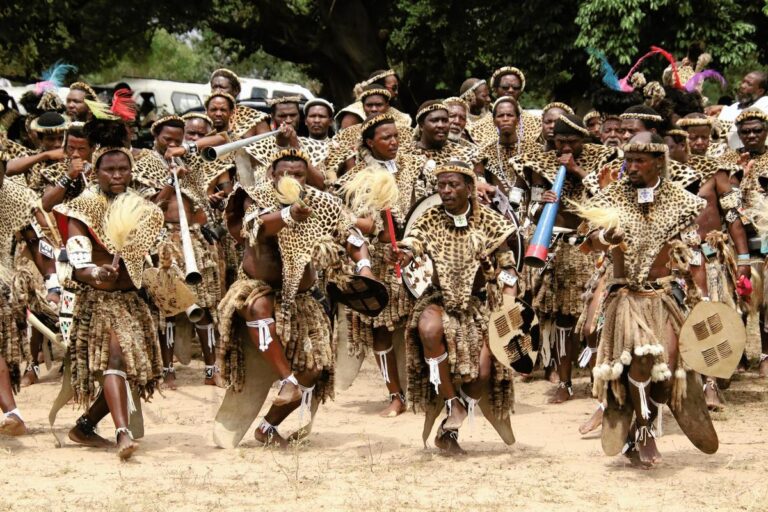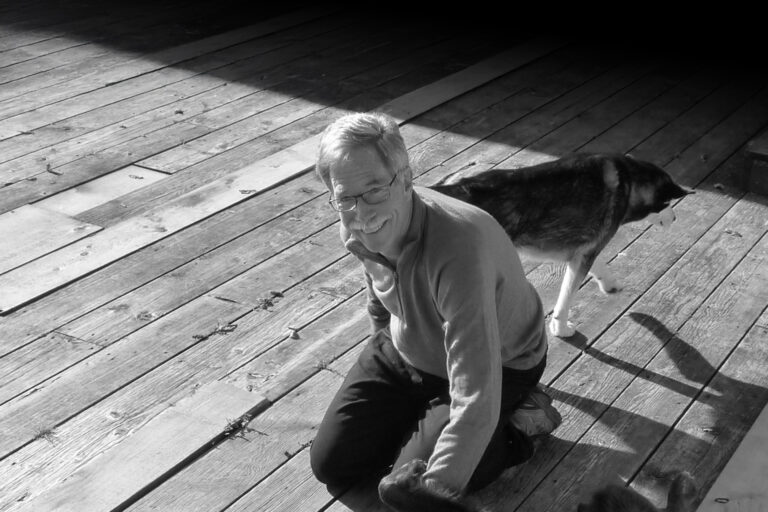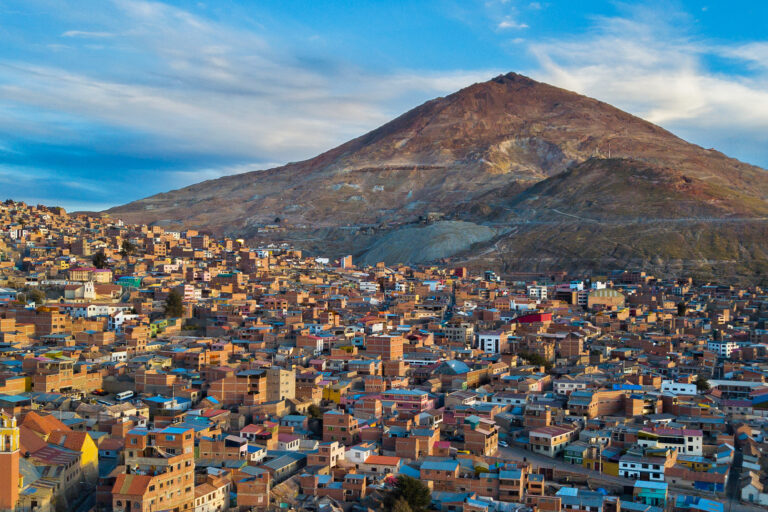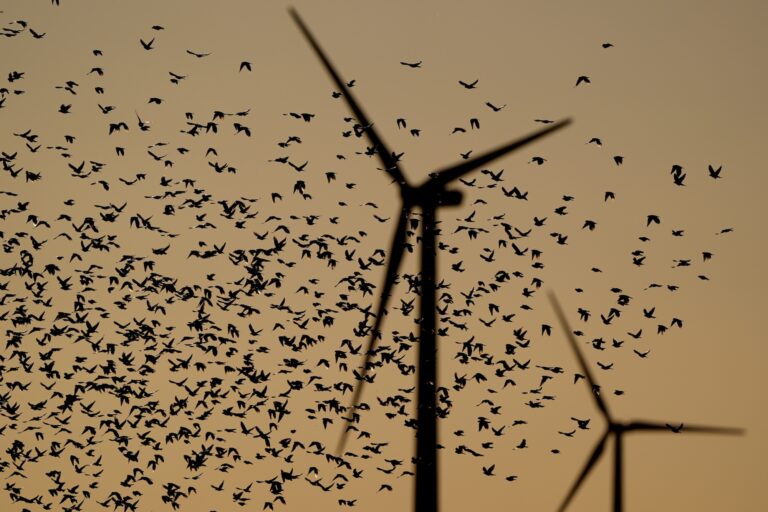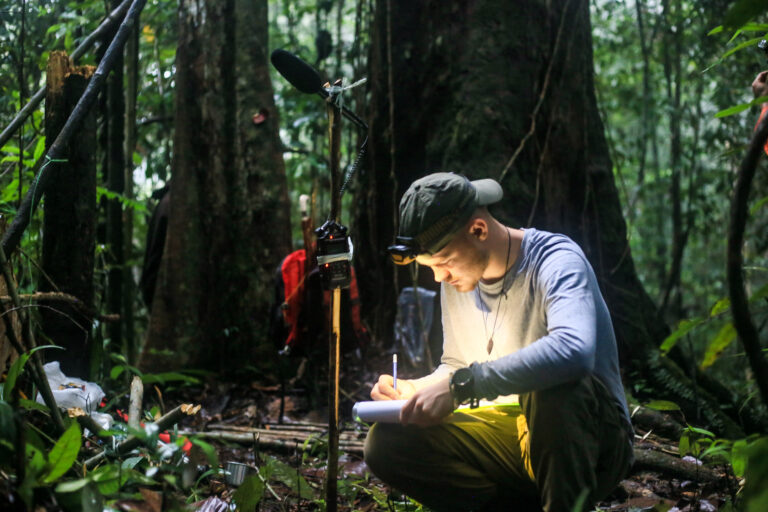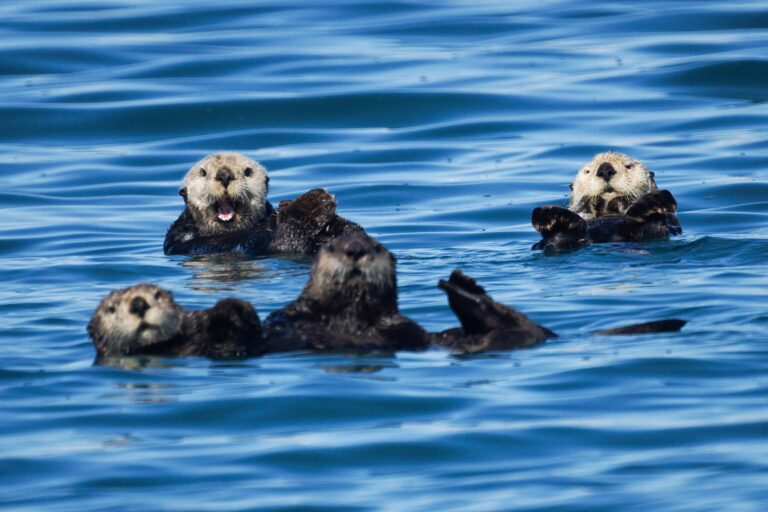- Two years since the Feb 1, 2021 military coup in Myanmar, Indigenous activists continue their struggle to protect the Salween Peace Park, an Indigenous Karen-led protected area, from conflict.
- The park was subject to military-led deadly airstrikes in March 2021 and renewed violence in the vicinity of the park continues to force people to flee their homes into the forest.
- The Salween Peace Park was launched in 2018 and encompasses 5,485 square kilometers (nearly 1.4 million acres) of the Salween River Basin in one of Southeast Asia’s most biologically rich ecoregions.
- With many examples around the world, peace parks seek to preserve zones of biodiversity and cultural heritage using conservation to promote peacebuilding. The SPP includes more than 350 villages, 27 community forests, four forest reserves, and three wildlife sanctuaries.
On 27 March 2021, the natural sounds of the teak and bamboo forests of eastern Myanmar — calling birds, croaking frogs and barking deer — were drowned out by a deluge of falling bombs. Over the following week, the bombs continued to fall on forests and villages, damaging schools, hospitals and farmland, in the heart of Salween Peace Park, an award-winning community-led initiative in Karen State.
The deadly airstrikes, staged by the military-led State Administration Council that carried out the February 2021 coup that ousted the country’s civilian government from power, affected tens of thousands of villagers, including thousands of refugees already seeking safety in a nearby internally displaced people (IDP) camp close to the border with Thailand.
By April 1, 2021, military forces had carried out several airstrikes, killing at least 19 people, injuring at least 27 more and forcing several thousands to flee their villages in search of safe refuge, according to the ICCA Consortium, a global association that recognizes and supports Indigenous peoples and local communities’ conservation areas.
Mere months prior to the coup, the Salween Peace Park (SPP), a 5,485,000-hectare (1.4-million acre) expanse of largely intact teak forest west of the Salween River in Karen State, was lauded internationally for its progress and ambitions toward peace, conservation, self-determination and cultural preservation.
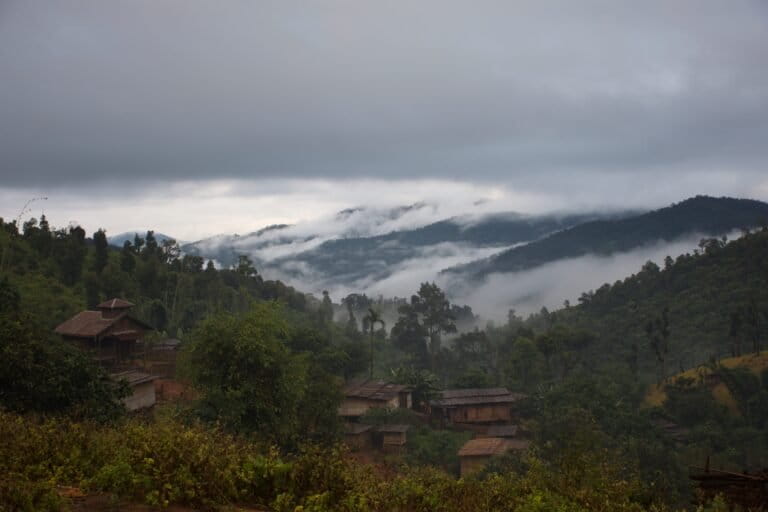
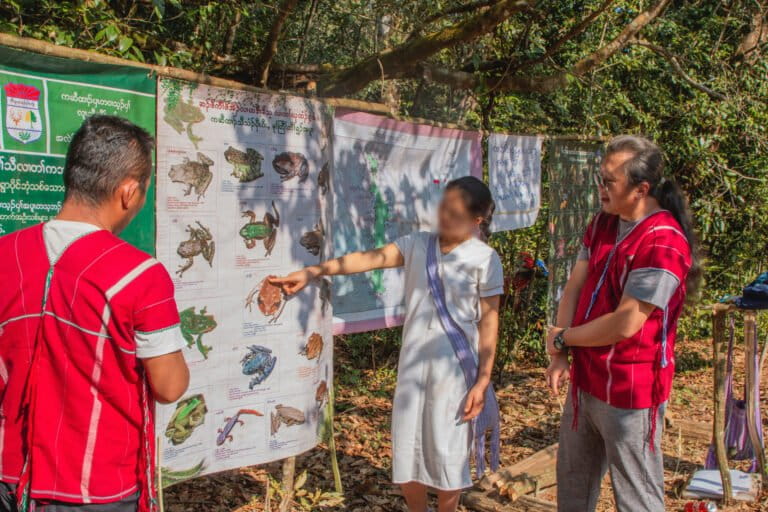
It has also served as inspiration locally to neighboring regions of Myanmar as an example of how the country’s Indigenous peoples and local communities (IPLCs), who account for roughly 40% of Myanmar’s population, can mitigate climate change through the protection of customary lands and forests under their stewardship.
But since the coup, community-led efforts to safeguard the SPP’s ecosystems from environmental pressures have been hampered by fierce territorial fighting as ethnic armed groups seek to resist the state military-linked forces. Monitoring resource extraction and development threats in many parts of the park is impossible due to security threats, and a growing number of displaced people are now dependent on forest resources to survive.
“These horrific attacks on innocent civilians within the Salween Peace Park are an assault on Indigenous peoples’ right to self-determination and peace,” an April 2021 open letter from the ICCA Consortium said, “a cloud of military occupation continues to hang over the area.”
Many parts of Myanmar have been steeped in violent conflict for more than seventy years. In Karen State, the Karen National Union (KNU) – the main political body for the Karen ethnic group – and their armed wing, the Karen National Liberation Army (KNLA) have clashed with the government and its army to gain political autonomy and territorial control over their lands.

Myanmar’s brief period under a quasi-civilian government between 2016 and the 2021 coup provided the opportunity for peace talks between the KNU and the central government. In late 2018, the talks culminated in the establishment of the SPP as a means of peace-building through environmental protection in the Salween Basin and as a way to counter the pattern of land-grabbing for industrial development and insufficient consultation with local people that prevailed during previous periods of military rule.
Despite a nationwide ceasefire agreement signed in October 2015, the airstrikes in 2021 came as the latest military-led assault in the area. In 2018, an Indigenous and environmental activist working on the initiation of the SPP was reportedly killed by military fire. According to the Karen Peace Support Network (KPSN), a network of civil society networks in Myanmar and Thailand committed to achieving sustainable peace, shelling by the Myanmar military has been an almost daily occurrence in parts of northern Karen State since December 2020.
According to a statement on the 2021 airstrikes, the KPSN says the Myanmar military has never supported peacebuilding in Karen territories. Instead, the regime have boosted their presence by fortifying military bases and roads and expanded into areas otherwise controlled by Karen-led groups.
Besides the 2021 attacks, escalating violence at a border post in the vicinity of the SPP during late March 2023 resulted in further retaliatory military-led shelling, according to Paul Sein Twa, executive director of the Karen Environmental and Social Action Network (KESAN), an organization involved in the management of the SPP.
The site of the March 2023 bombing was only a few kilometers from one the major IDP camps that houses roughly 3,000 people, Paul Sein Twa said. “At night, people usually stay away from their homes because they worry about night-time attacks,” he told Mongabay. “People believe they will be safer in the forest… it is a big responsibility to have thousands of political IDPs within the peace park surviving in our territory.”

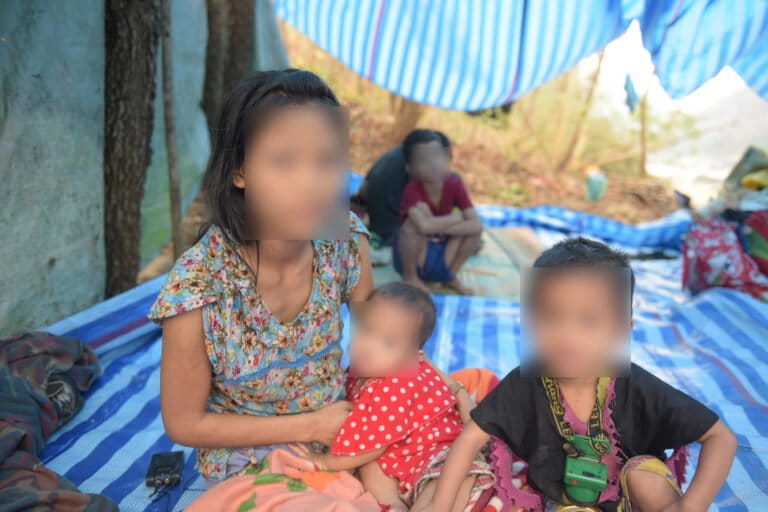
More than 3,400 civilians have been killed in Myanmar since the Feb. 2021 coup, according to the Assistance Association for Political Prisoners (AAPPB), a group that closely tracks casualties and arrests. The military regime has also overseen the arrest of more than 21,500 people and violent conflicts have displaced more than one million people from their homes, more than half of whom hail from destabilized Indigenous territories.
Read more: Myanmar communities decry disempowerment as forest guardians since 2021 coup
The Salween Peace Park
With many examples around the world, peace parks seek to preserve zones of biodiversity and cultural heritage using conservation to promote peacebuilding.
The Salween Peace Park was launched in December 2018 and is the culmination of several decades of community-driven approaches to conservation, including the establishment of community forests, the enforcement of fish conservation zones and the demarcation of Kaw (traditional Indigenous lands).
Located in an area that has suffered more than 70 years of civil war, the SPP is co-managed by the Forestry Department of the Karen National Union together with local Karen communities and the Karen Environmental and Social Action Network (KESAN). It includes more than 350 villages, 27 community forests and three wildlife sanctuaries, which are stewarded through Indigenous Karen practices that center on living in harmony with nature: peace, ecological harmony, self-determination and cultural survival are at the heart of the park’s activities.
The SPP is home to some of the last remaining tracts of intact rainforest in the region where scientists have confirmed the presence of breeding leopard populations. Other species that reportedly live within the park boundaries include tigers, Sunda pangolins, clouded leopards, gibbons and several species of bears. Furthermore, the Salween River—Asia’s longest free-flowing river—runs through the park.


The SPP’s grassroots, community-led conservation efforts has received international recognition in recent years, receiving awards including the 2020 Equator Prize and 2020 Goldman Environmental Prize for Asia.
New challenges abound
The post-coup conditions have presented the “perfect storm” to facilitate the spread of harmful extractive industries in Myanmar, Hanna Hindstrom, senior natural resource governance campaigner at Global Witness, told Mongabay. “There’s no governance, there’s no accountability, no conditions to regulate it,” she said.
Hindstrom said many conflict-affected areas have slipped further into lawlessness since the coup, paving the way for rampant and unregulated natural resource extraction. Both the military regime and armed ethnic groups are looking to monetize the mining and timber sectors in particular, she said, to finance their respective conflicts.
“This has left communities stuck in the middle and with no kind of recourse to any kind of civilian government to try to seek justice and accountability,” Hindstrom said. “So [communities] are operating in an extremely tense and difficult space.”
In the Salween Peace Park, Paul Sein Twa said the threat of aerial bombardment makes life unpredictable for communities and refugees. Many have retreated into the forest to avoid being close to potential targets in towns and villages. The danger presented by armed conflict in the southern parts of the peace park also means community rangers who would normally carry out monitoring and regulatory work have had to cease their work.
Refugees living in the forest out of fear are forced out of necessity to clear patches of forest to cultivate crops to feed their families and to obtain timber and bamboo with which to construct homes, while they await a safe time to return home. “They are living widely dispersed throughout the forest, many thousands of people, so you can imagine how much of those resources they will need,” Paul Sein Twa said.
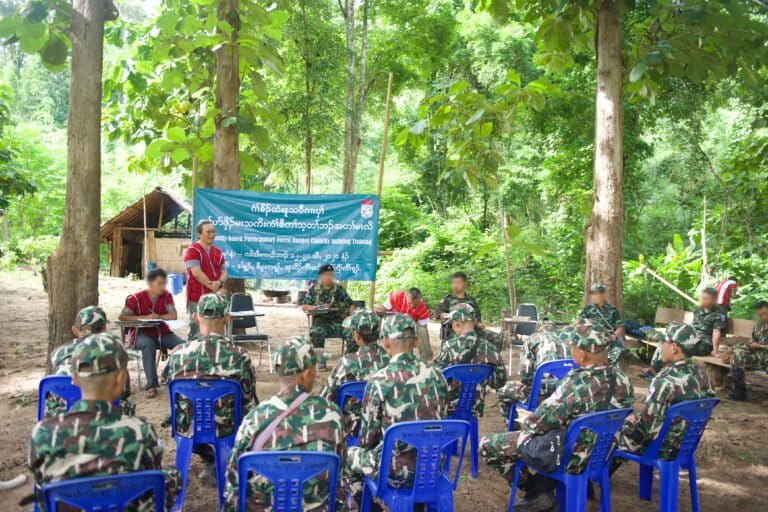
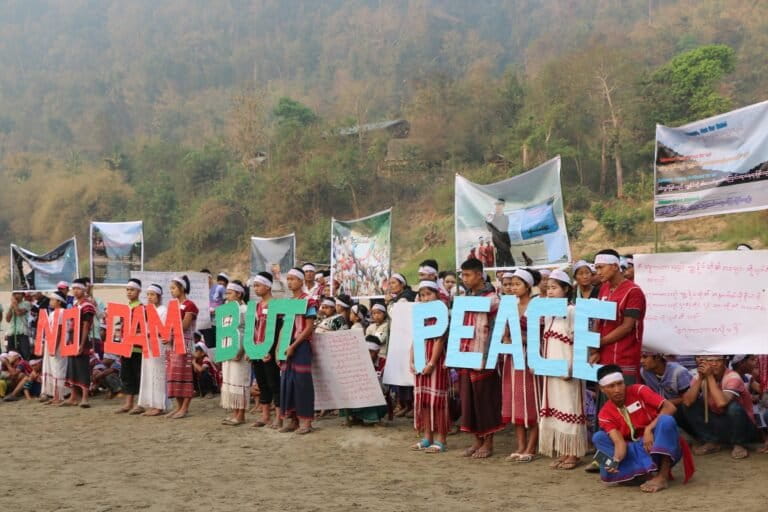
Paul Sein Twa said that artisanal gold mining by the Indigenous communities has proliferated in the SPP as families are forced to find ways to eke out a living in the economic void left by the double whammy of the coup and the pandemic. The gold mining is a particular concern, he said, as it is unregulated, difficult to monitor and can cause severe harm to river beds and water quality.
The SPP purposefully encompasses the site of the proposed Hatgyi dam, a major hydropower development project proposed to span the otherwise free-flowing Salween River. Such potentially destructive megaprojects are on hold for the time being, Paul Sein Twa said, but vigilance is essential — plans could resurface at any moment.
“We know that for as long as the conflict is ongoing, no one will come into this area from the investor side,” he told Mongabay. “But the SAC [ruling State Administration Council] is trying to promote foreign investment in these sorts of large-scale infrastructure developments and energy projects [so] we need to continue to monitor what’s going on since they could secretly move quickly when [conditions for investors] are more suitable.”
Conservation activities continue despite challenges
Despite the challenges presented by ongoing post-coup conflicts and escalating environmental pressures, IPLCs across Myanmar are continuing their struggle to protect and sustain the health of their forests and watercourses. The Salween Peace Park is a source of strength and resilience in this time of conflict, according to Paul Sein Twa.
“People are very brave and still coming together to perform traditional ceremonies and showing solidarity despite the threats from the air,” Paul Sein Twa said. “People are focused on hope, and through our activities, we want to send the message that the military cannot kill our dream: our hope for freedom, for self-determination, not just for our political structure but also to protect our forest, to protect our land and our biodiversity.”

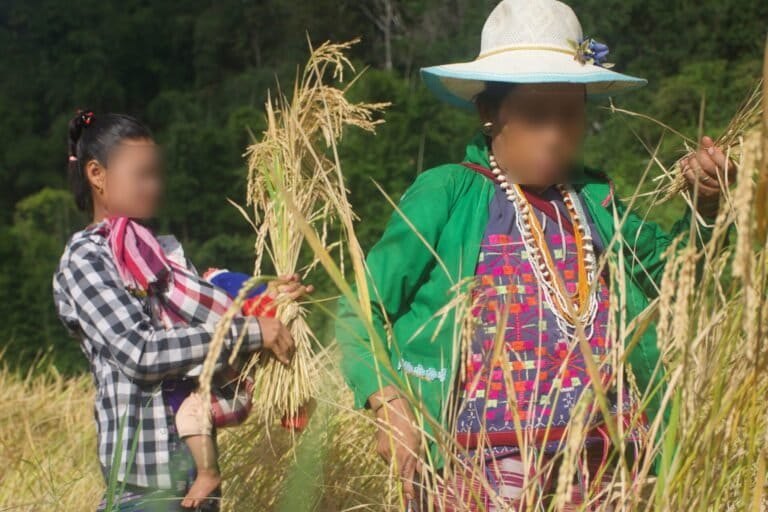
Casper Palmano, land and forest program advisor for the Karen Environmental and Social Action Network (KESAN), told Mongabay that despite the challenges of post-coup conflicts, communities in the SPP are “more committed than ever” to safeguarding vulnerable members of society and the forest ecosystem.
“[The coup situation] did not bring an end to conservation measures, though, as in large part conservation in the SPP is conducted as part of communities’ daily lives” which in most cases follow Indigenous Karen traditions that uphold a deep respect for nature, he said.
Palmano said the park has recently expanded in size, with eight new villages have committing their land to the peace park since the coup.
Progress has also been made toward a set of park-wide wildlife protection guidelines and a review of development policy to promote conservation measures, strengthen community forest rights and reduce the threat of harmful development projects in the SPP, he said. Furthermore, a Karen language curriculum aimed at disseminating cultural knowledge to local villages is about to be launched.
The military SAC’s deadly airstrikes on civilian targets, as recent as this past April killing at least 100 people, have been widely condemned by international human rights groups as war crimes. Hindstrom told Mongabay that more effort is now required from the international community to clamp down on supplies of aviation fuel in the country so that military jets cannot take to the skies.
The international community can also do more to acknowledge and encourage community-led environmental protection, she said. “Frontline grassroots initiatives [like the Salween Peace Park] become all the more important [when] there’s no functional government in place,” Hindstrom said. “Where the international community could and should offer more support to protect the environment in Myanmar is to focus on [financially] supporting these kinds of community, grassroots-led initiatives.”
Carolyn Cowan is a staff writer for Mongabay. Follow her on Twitter @CarolynCowan11
Banner image: Villagers seeking shelter following the March 2021 airstrikes at an IDP camp within the Salween Peace Park. Image courtesy of KESAN.
Related listening from Mongabay’s podcast: How the Shuar Indigenous community in Ecuador recently won a major victory to protect its ancestral territory of Tiwi Nunka Forest from cattle ranchers, loggers and miners. Listen here:
In world convulsed by climate-driven conflict, are peace parks an answer?
FEEDBACK: Use this form to send a message to the author of this post. If you want to post a public comment, you can do that at the bottom of the page.







